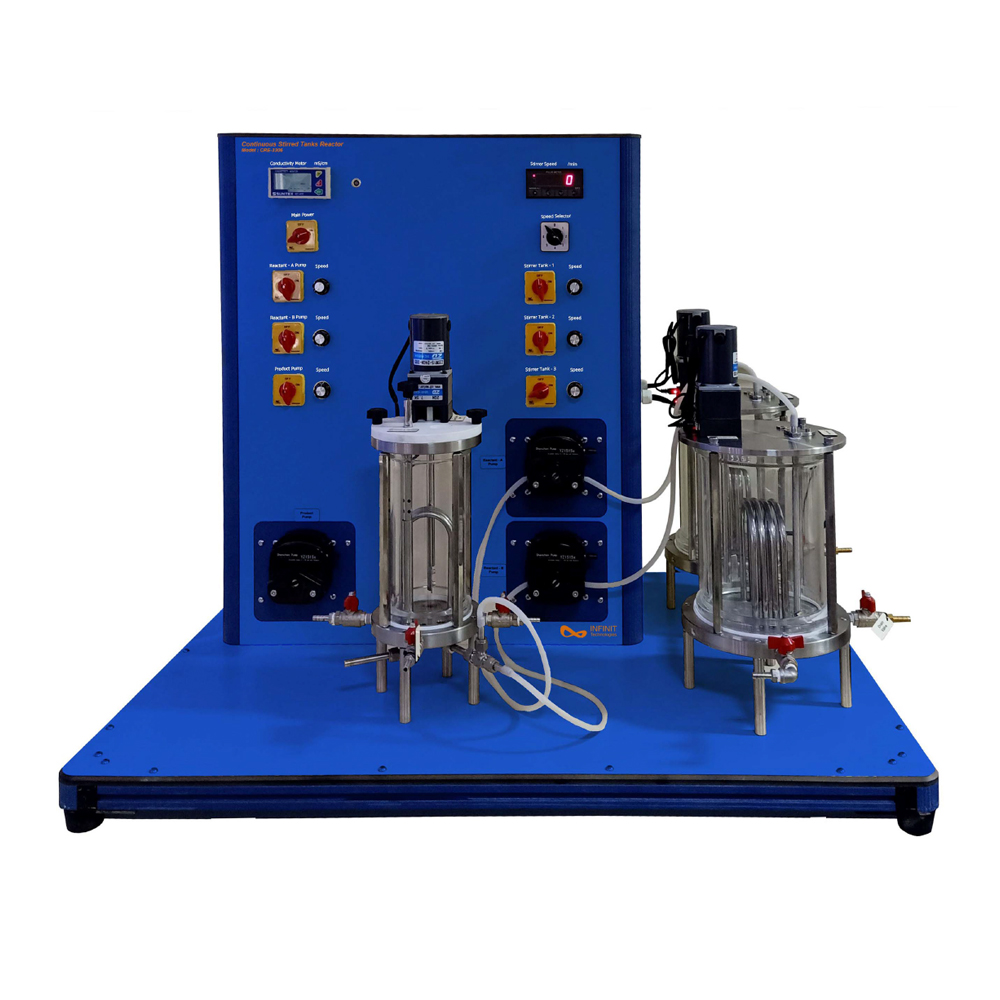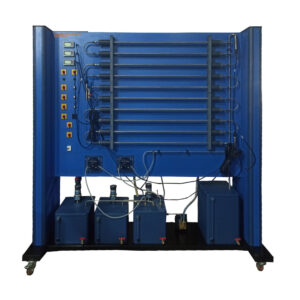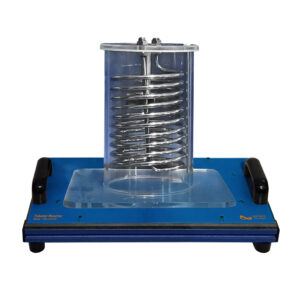The operation of stirred tank reactors can be either continuous or intermittent. Discontinuously operated stirred tank reactors are typically employed when the reaction rates are extremely slow or the product amounts to be produced are minimal. Continuous stirred tank reactors provide for the dependable manufacture of substantial amounts of consistent-quality output. This equipment series that enables research with various reactor types includes the CRE-3306. An analysis of a stirred tank reactor’s functioning, both continuous and discontinuous, is conceivable. The apparatus includes a heating water circuit in addition to all required connections, pumps, reactant and product tanks, and tanks for reactants.
The CRE-3306 is attached to the supply unit and secured in place by two pins. The reactor may be quickly and easily connected to the supply unit using quick-release connections. Two pumps on the supply unit continuously feed the reactants into the reactor. By ensuring a homogenous mixture, a stirrer extends the amount of time that the reactants are in direct contact. The reactants react to create the product. Through an overflow, the combination of product and unconverted reactants is transferred into a tank of the supply unit. The overflow might vary in height. As a result, the reactor volume can be changed. By varying the speed of the pumps on the supply unit, the retention duration of the reactants in the reactor can be changed. The stirred tank reactor’s chambered bottom acts as a heat exchanger to analyze how temperature affects the process.
By measuring the conductivity, the conversion in the stirred tank reactor is identified. Included is a conductivity/temperature combination sensor. Temperature and conductivity are digitally shown on the supply unit’s switch cabinet. Additionally, data capture software can record and process the measured quantities (optional).
Technical Data
Stirred tank reactor
- Outer diameter: 110mm
- Inside diameter: 100mm
- Height: 250mm
- Adjustable volume: 1500~1950mL
- Material: boro 3.3 glass
Stirrer
- Speed: approx. 300min-1
- Quantity: 3
Peristaltic pump for reactants
- Quantity: 2
- Max. flow rate: approx. 500mL/min
Peristaltic pump for products
- Max. flow rate: approx. 500mL/min
Water pump
- Max. flow rate: 10L/min
- Max. head: 10m
- Power consumption: 120W
Heater
- Power consumption: 3000W
Tanks
- Reactants: 2x 3L
- Product: 5L
- Heating water: 8L
Measuring ranges
- Conductivity: 0~200mS/cm
- Temperature: 0~60°C
Software: CRE-3306SW (optional)
DAQ software specially designed in National Instrument™, LABVIEW™ environment to measure and calculate the results of apparatus. The software is optional and while using software a set of electronic sensors are included. Software can be run with any Windows™ environment.




